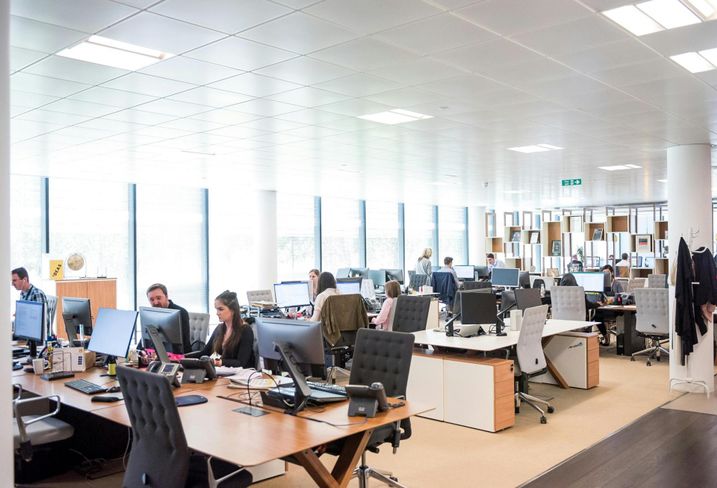U.S. Office Edges Closer To Recovery Than At Any Point Since Pandemic's Onset
There has been lots of hand-wringing about the state of the U.S. office market since the pandemic turbocharged a remote work revolution, but a pair of new reports indicates the sector could be on the brink of a turnaround.
Net absorption was positive for the first time in two years and asking lease rates are up modestly nationwide, according to Colliers’ third-quarter U.S. office report, which says U.S. office “appears closer to recovery than at any other point post-COVID.”
Meanwhile, a CBRE report suggests the nation's cities are starting to more significantly reckon with obsolete office buildings, with 73 conversion projects already completed and another 30 scheduled to wrap up by the end of the year.
“Growing leasing transaction volume and tenant demand in most major markets are starting to positively impact fundamentals,” Colliers said in its report. “Sentiment among property owners and tenants is mainly positive, with the outlook for the next 12 months trending upward.”
Roughly 800K SF of office space was absorbed in Q3, according to Colliers. That was a major shift from the same period in 2023, when tenants vacated 16.4M SF more than they leased. Asking rents grew just under 1% from $36.76 to $37.09 per SF over the same time frame. Average rent was up 0.6% from Q2.
The report also says sublease availability has fallen for the fifth consecutive quarter and is now down to 220M SF nationally. Fewer large blocks are being dumped on the market, limiting oversupply.
The national office vacancy rate is 17.6%, but Colliers uncovered a high degree of regional variability. Markets like Savannah, Georgia, Santa Fe, New Mexico, and those in states such as Idaho all sit well below 5%, while San Francisco, Chicago and Houston are seeing rates between 25% and 30%.
There is overlap between markets Colliers identified as struggling with high vacancy and where CBRE found the most office conversion activity.
Houston has 5.9M SF of conversions planned or underway, which accounts for roughly 3% of the area’s office inventory. The figure is at 4.8M SF in Chicago, representing just under 2% of the city’s office inventory.
The San Francisco Peninsula has 1.2M SF of office conversions planned or underway, which accounts for about 3% of the region’s office stock. But San Francisco is bucking one trend: 74% of office conversion projects across the country will transition offices to multifamily housing, but none of the San Francisco conversion projects involve apartments.
CBRE's report doesn’t specify what will happen with those Bay Area properties, but nationally, 8% of office conversions will be hotels, 6% will be life sciences spaces and 4% will be industrial.
The 103 conversion projects set to complete in 2025 represent the most CBRE has seen since it started tracking office conversions in 2016.
In Q3, 71M SF, or 1.7% of the nation’s office stock, was undergoing or slated for conversion. Those are the same metrics as in Q1, which means the pipeline is replenishing itself, according to CBRE’s analysis.
The company expects office conversion activity to skyrocket in 2025. It found that 185 conversions have been planned or announced for next year. Another 94 projects are underway and set to complete in 2025.
Low office building valuations have made adaptive reuse more accessible for developers considering conversion projects, and “the pipeline of office conversions is expected to grow as cities offer more incentives and sellers of troubled assets further discount prices, particularly for older buildings,” CBRE said.
This summer, PMC Property Group bought the Three Parkway office tower in Philadelphia for $30M. That was just 26% of the building’s previous assessed value. PMC planned to convert half of the mostly vacant building into 175 residential units.
New York state’s $237B budget agreement finalized earlier this year includes a tax incentive for office-to-multifamily conversions. More than half of the office buildings in Manhattan would be good candidates for residential conversion, according to the CommercialEdge Conversion Feasibility Index.
But the outlook isn’t so rosy elsewhere. CommercialEdge found that just 1 in 6 office buildings across the country would be good candidates for residential conversion.

